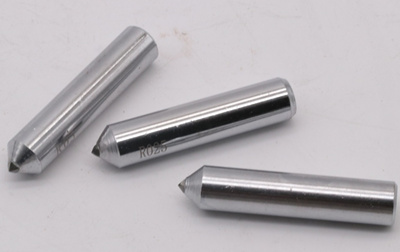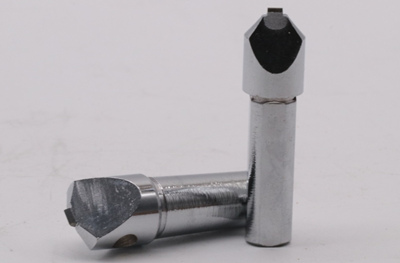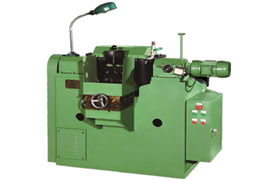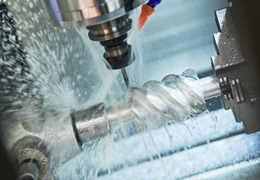In a machine shop, all kinds of grinders run in perfect order. The grinding wheel is the “cutting edge” of a grinder, yet after long service, its surface dulls and loses flatness. At this moment, the diamond dressing pen is called into action. Small and unassuming, it plays an indispensable role in the grinding process; let’s examine it in detail.
1. Principal Functions of a Diamond Dressing Pen

The core task of the pen is to dress the wheel. Picture a wheel that has been grinding parts continuously: its abrasive grains wear down and become blunt, while metal chips pack the voids between grains. The wheel can no longer machine accurately; parts come out oversize or with rough finishes. A few light “scratches” across the wheel surface with a diamond dressing pen knock off the dull grains, clear out the chips, and restore the wheel to a flat, sharp condition—as good as new.
Beyond restoring performance, the pen is used for “shaping” the wheel. Some jobs need a wheel of special form—radiused, angled, or profiled. Thanks to its extreme hardness, the diamond pen can cut the wheel to the required contour so the grinder can produce parts to specification. New wheels also need dressing before first use to make the grain distribution uniform and prevent accuracy problems during break-in. This step is analogous to honing a new cutting tool and is called “opening” the wheel. For example, when grinding optical lenses, a wheel must have a precise radius; the diamond pen forms that radius so the lens can be finished to optical accuracy.
2. How to Choose the Right Model
Selecting a pen is not guesswork; it must be based on real requirements. Consider the following points.
Wheel Type and Size
Different wheel materials—alumina, silicon-carbide, etc.—have different hardnesses, and each calls for a matching pen. A hard wheel requires a pen with larger, tougher diamond grit; a soft wheel needs only fine grit, lest it be over-dressed. Wheel diameter is equally important. For small wheels (<150 mm), use a slim pen of 3–5 mm diameter; for large wheels (>350 mm), choose a sturdy 8–12 mm pen for stability and speed. In small-die work a 100 mm wheel pairs well with a 4 mm pen; in large-roll grinding a 600 mm wheel calls for a 10 mm pen.
Precision Requirements

When grinding aerospace turbine blades or similarly critical parts, the wheel surface must be exceptionally true. Select a pen with a sharp, fine-grit point. For ordinary parts a blunter point is adequate and lasts longer. Feed rate also matters: fast feeds demand a more wear-resistant pen. In automotive work, engine components require high-precision pens, whereas brackets can be dressed with a more durable, general-purpose pen.
Different grinders use different holders—threaded or clamp-type. Verify the interface before purchase. Small bench grinders usually take M8 or M10 threaded pens; large portal grinders may need pens clamped at 16 mm shank diameter.
In short, although the diamond dressing pen is only a small tool, selecting the right one and using it correctly is essential for grinder performance. Keep its functions in mind, choose the model to suit actual needs, and you will obtain a pen that is both appropriate and durable, keeping your grinder in peak condition and turning out qualified parts.
As the machining industry keeps raising its demands for accuracy and productivity, the importance of wheel dressing becomes ever more pronounced. Diamond dressing pens continue to evolve: new synthetic-diamond types are pushing the boundaries of wear resistance and cost-effectiveness, better matching a variety of application scenarios. For shop-floor operators and purchasing staff alike, mastering the relevant knowledge of diamond dressing pens not only cuts production losses but also lays a solid foundation for higher product quality and greater efficiency. In the future, under the banner of smart manufacturing, these pens may well be integrated with automated equipment to deliver even more precise and efficient wheel dressing, ensuring they remain a key player in the machining world.










